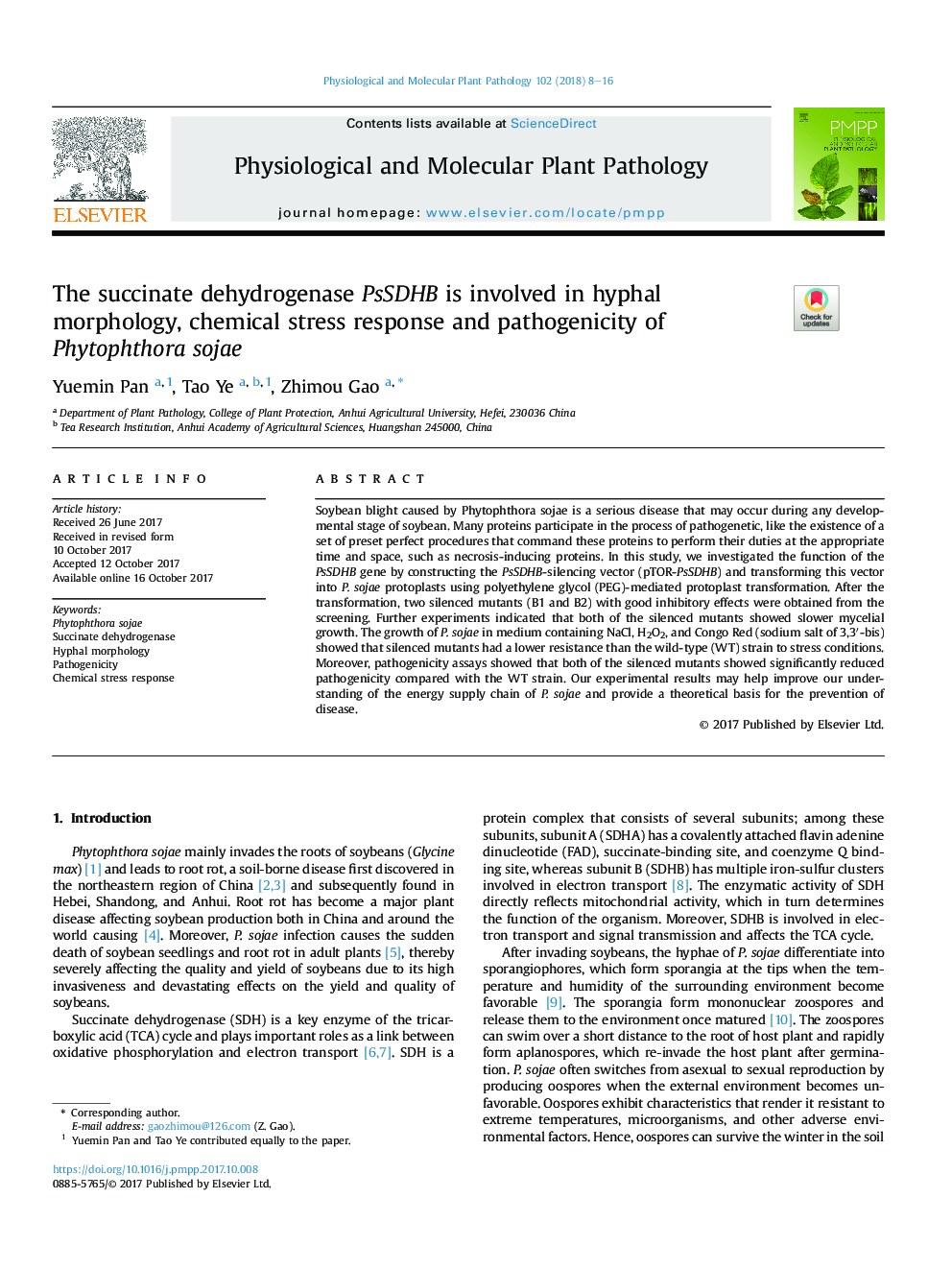| Article ID | Journal | Published Year | Pages | File Type |
|---|---|---|---|---|
| 8649208 | Physiological and Molecular Plant Pathology | 2018 | 9 Pages |
Abstract
Soybean blight caused by Phytophthora sojae is a serious disease that may occur during any developmental stage of soybean. Many proteins participate in the process of pathogenetic, like the existence of a set of preset perfect procedures that command these proteins to perform their duties at the appropriate time and space, such as necrosis-inducing proteins. In this study, we investigated the function of the PsSDHB gene by constructing the PsSDHB-silencing vector (pTOR-PsSDHB) and transforming this vector into P. sojae protoplasts using polyethylene glycol (PEG)-mediated protoplast transformation. After the transformation, two silenced mutants (B1 and B2) with good inhibitory effects were obtained from the screening. Further experiments indicated that both of the silenced mutants showed slower mycelial growth. The growth of P. sojae in medium containing NaCl, H2O2, and Congo Red (sodium salt of 3,3â²-bis) showed that silenced mutants had a lower resistance than the wild-type (WT) strain to stress conditions. Moreover, pathogenicity assays showed that both of the silenced mutants showed significantly reduced pathogenicity compared with the WT strain. Our experimental results may help improve our understanding of the energy supply chain of P. sojae and provide a theoretical basis for the prevention of disease.
Related Topics
Life Sciences
Agricultural and Biological Sciences
Plant Science
Authors
Yuemin Pan, Tao Ye, Zhimou Gao,
